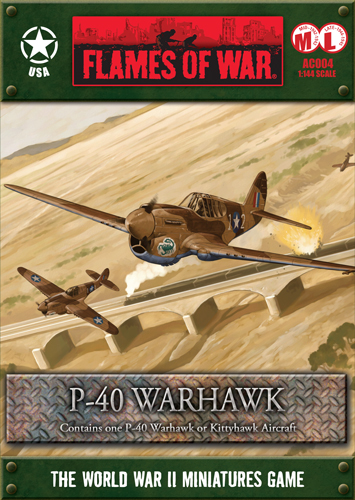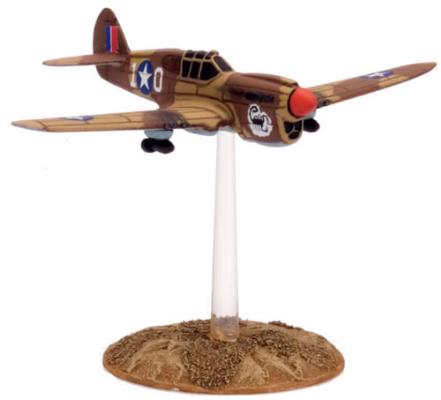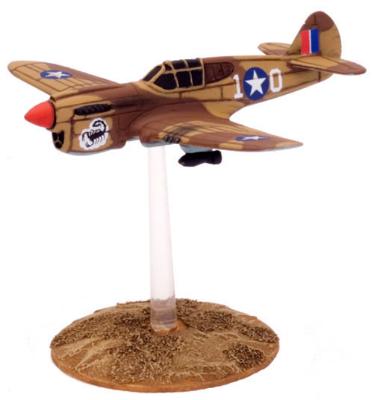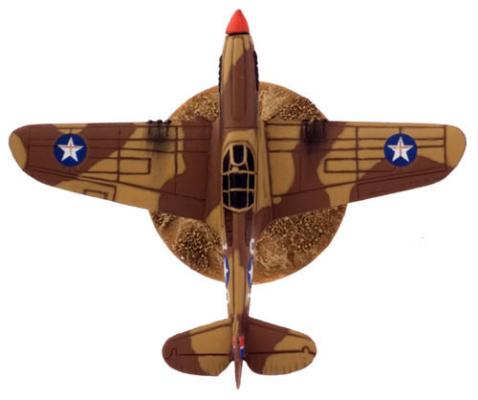|
|
|
|
Products mentioned in this Article
--None--
|
|
|
|
|
|
|
|
|
 |
|
|
 |
P-40 Warhawk (AC004)
Curtiss P-40E Warhawk
The P-40 fighter/bomber was the third-most numerous US fighter of World War II. Design work on the aircraft began in 1937, with a number of experimental versions tested before the first production version appeared in May 1940 (the Model 81).
|
By September 1940 over 200 had been delivered to the US Army Air Corps. A further 185 more were delivered to Britain in the second half of 1940. The British designated them the Tomahawk Mk I.
After initial combat experience a need for more armour was recognised. Self-sealing fuel tanks were also included in the improved P-40B (British Tomahawk Mk IIA). However the improvements cost the P-40 a significant loss of performance due to the increased weight.
|
 |
 |
The P-40C (Tomahawk Mk IIB) added more armour increasing the weight and reducing its flight performance. The P-40D (Kittyhawk Mk I) final addressed these problems when Curtiss installed the more powerful version of the Allison V-1710 engine. The P-40D also had two additional wing-mounted guns. The new engine modified the external appearance prompting the RAF to rename it from the Tomahawk to the Kittyhawk.
P-40E (Kittyhawk Mk IA) added two more guns. This version was used with great success (along with the earlier B-models) by the American Volunteer Group (The Flying Tigers) in China.
The P-40E was also used in North Africa by the British and US forces.
|
Technical Data
Designation:
|
P-40E
|
Engine:
|
1150hp Allison V-1710 inline piston engine
|
Weight:
|
Empty 6,350lbs; Max Takeoff 9,200lbs
|
Wing Span:
|
37ft. 3.5in.
|
Length:
|
31ft. 2in.
|
Height:
|
10ft. 7in.
|
| Maximum Speed: |
366mph at 10,000ft
|
Ceiling:
|
29,000ft
|
Range:
|
350 miles
|
Armament:
|
Six .50 cal wing-mounted machine guns. Up to 500lbs of bombs.
|
|

|


|
Total number of P-40 Warhawks built: 15,000 (Aprox).
Decals
The Scorpion Decals represent the US 64th Fighter Squadron, 57th Fighter Group stationed in the Mediterranean through out the entire war.
The shark’s teeth, though first adopted by the Flying Tigers in China, was widely adopted by a number of various US and British Warhawk Squadrons.
Painted by Jeremy Painter
|
Last Updated On Thursday, March 22, 2012 by Chris at Battlefront
|
|
|